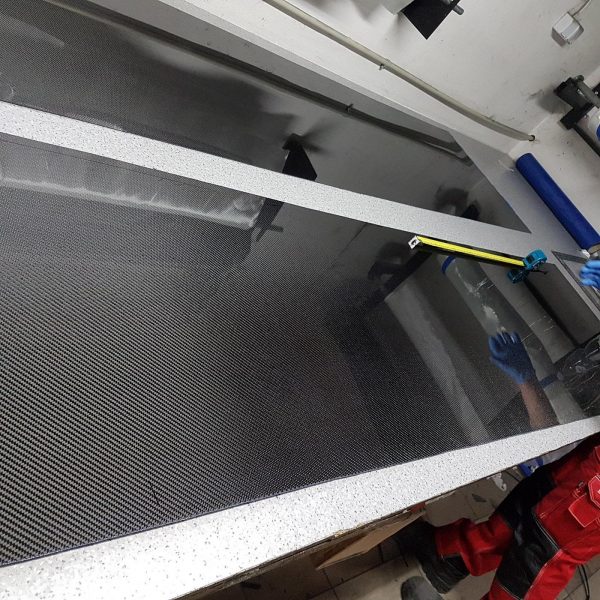Carbon fiber composites feature many unique properties including extreme strength, light weight, almost no thermal expansion, as well as original and prestigious appearance. This material was often referred to as the royal composite and it is recognized by many as the most advanced and unique, which is widely used during manufacture of Formula 1 racing cars. However, carbon fiber also has some disadvantages.
Not everybody knows that carbon fiber has some disadvantages that are responsible for the rare use of composites during series production.
The most essential disadvantages of carbon fiber composites include the following:
1. Costly manufacturing and high-cost of carbon fiber products
The manufacturing process of any carbon fiber product is usually costlier than plastic or aluminum, which results in crucial limitations regarding use of carbon fiber for series production.
What makes production of carbon fiber products so costly?
Costs related to manufacturing of carbon fiber products are generated mainly by time-consuming production process, costly raw materials (carbon fiber fabrics) as well as expensive production facilities. The manufacturing of carbon fiber composites follows mainly using carbon prepregs placed manually in the moulds. Carbon fiber products are known for an attractive and unique design which is possible due to specific placement of fabrics e.g. bumper rear diffuser includes on average 4-5 layers of fabrics what makes for time-consuming production process. Therefore carbon fiber components require usually 2-3 coats of painting and further top coat finishing treatment including polishing.
Firstly raw materials necessary for manufacture namely carbon fiber is also expensive and it costs as much as EUR 50 per m2 (carbon fiber prepregs). Secondly used for manufacturing is quite expensive, e.g. autoclave that is indispensable for production of high quality carbon fiber costs ca. EUR 200-400 thou.
Consequently the above results in costly production process and high costs of finished carbon fiber products.
2. Debatable possibility for repair of carbon fiber composites
The most common damage of carbon fiber products is cracking. Repair of damaged carbon fiber composite is often difficult and costly as only few suppliers supply services in the area. Any damage of carbon fiber component has impact on the structure of carbon fabrics and on final undesired effects related to aesthetics. Any cavities that may accompany the damage actually make the matter worse– e.g. the cracked bumper and bumper wall chippings– such damages are beyond repair.
3. Moderate thermal resistance comparing to metals
Carbon fiber composites offer moderate thermal resistance if compared with metals. For example, carbon fiber composites that feature average strength offer resistance to temperature of 70-80°C degrees, whereas the ones that feature high-strength offer resistance to temperature of 100-160°C degrees. Maximum thermal resistance possible to be obtained in case of carbon fiber composites is around ~ 300-400°C degrees. In other words, the strength that is taken for granted in case of steel or aluminum without additional treatment, may be provided in case of carbon fiber with costly specially designed resins and hardening at high temperature or sometimes is simply not possible.
4. Poor impact resistance
Comparing to metals like aluminum or steel, carbon fiber composites features with poor resistance to impacts that make it fragile. Therefore any strong impact may result in cracking. To improve resistance to impact and strength, combination of carbon fiber and other materials used often namely glass fiber, aramide / Kevlar or aluminum (honeycomb). Most common combination includes carbon composites along with aluminum honeycomb used to provide for a crumple zone in case of F1 racing cars or super cars like Koenigsegg. Other option relates to placement of a few aramide or glass fiber layers inside the composite to improve strength of components exposed to impact.
5. Inflammability
Carbon fiber composites are flammable and ignite easily when exposed to fire or flames. Although special technology is available that ensures desired fire resistance of carbon fiber composites, yet such technology is costly and is offered by few companies over the world, using expensive autoclave composites (highly costly technology) offering finally most common appearance– standard resins in white color. In respect of flammability carbon fiber composites are similar to plastic components, whereas steel and aluminum ones offer much more in this regard. In case of products exposed to high temperature and flames, a thin aluminum barrier is often incorporated in the outer layer of carbon fiber component to improve fire-rating.



